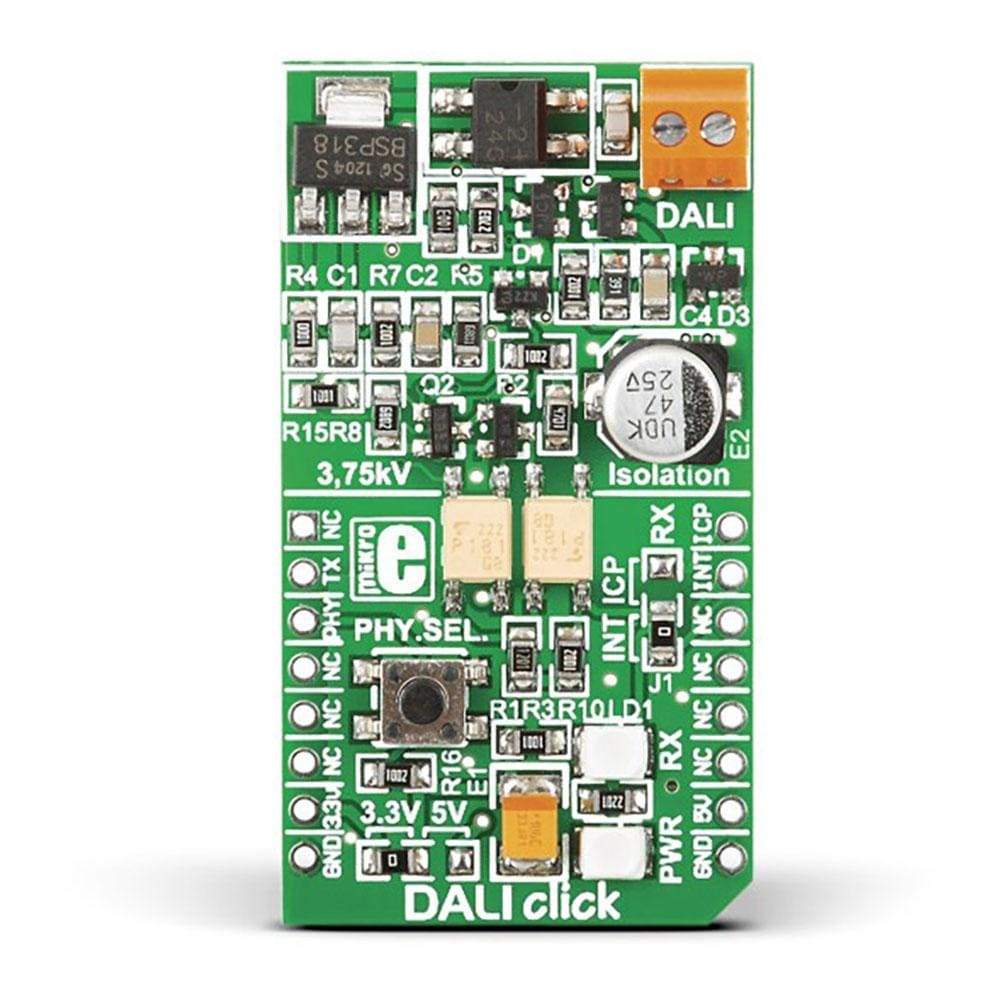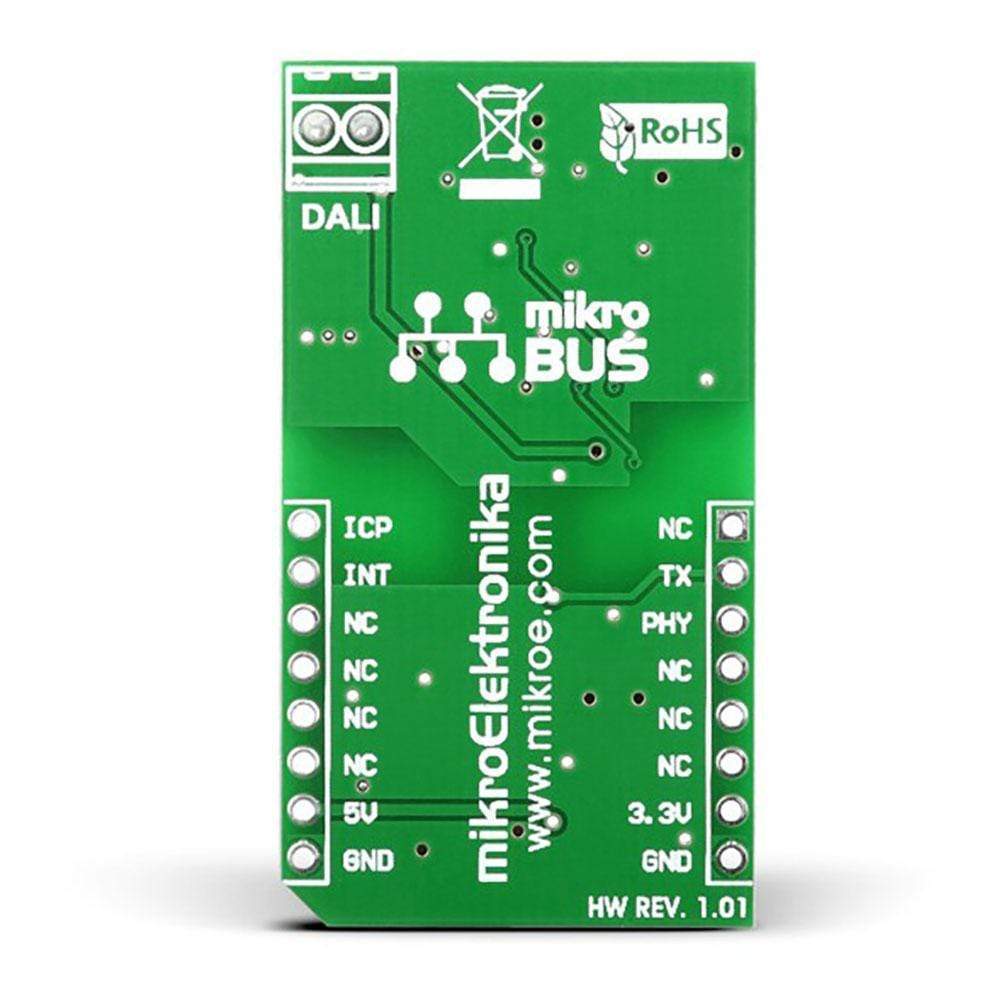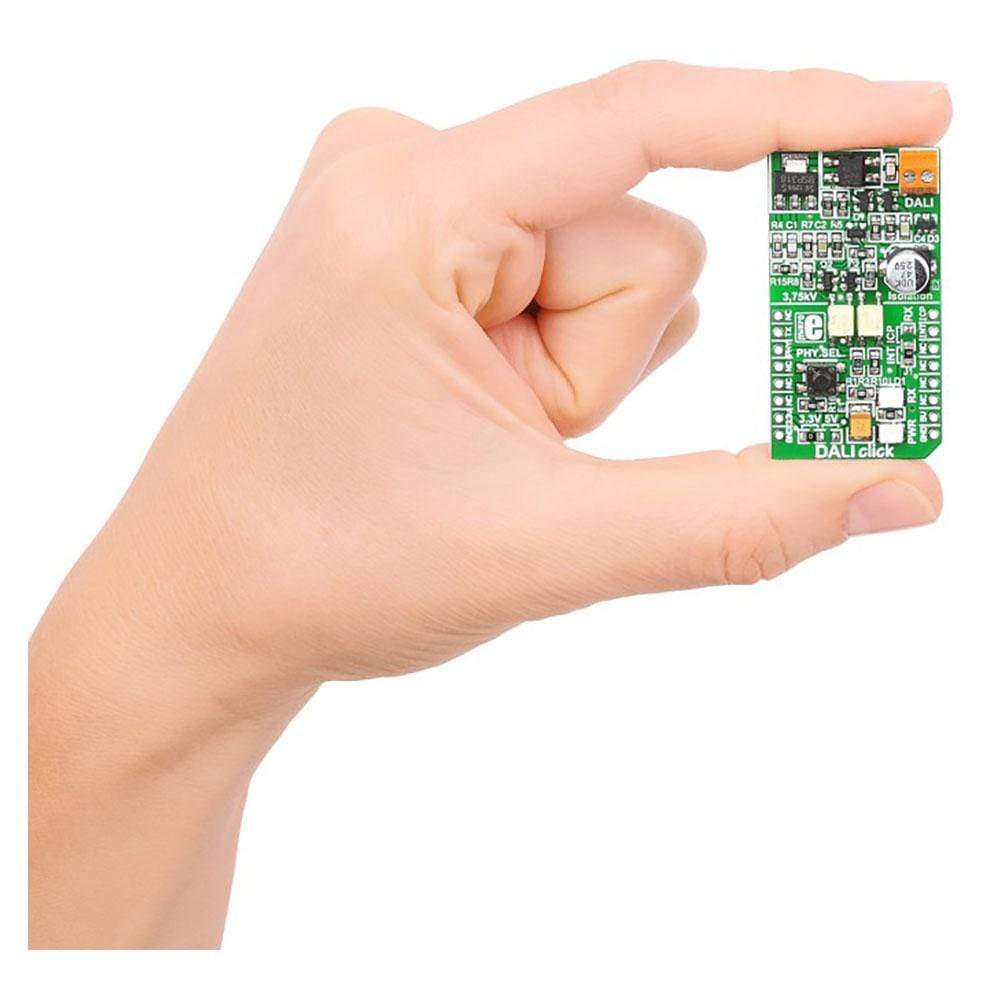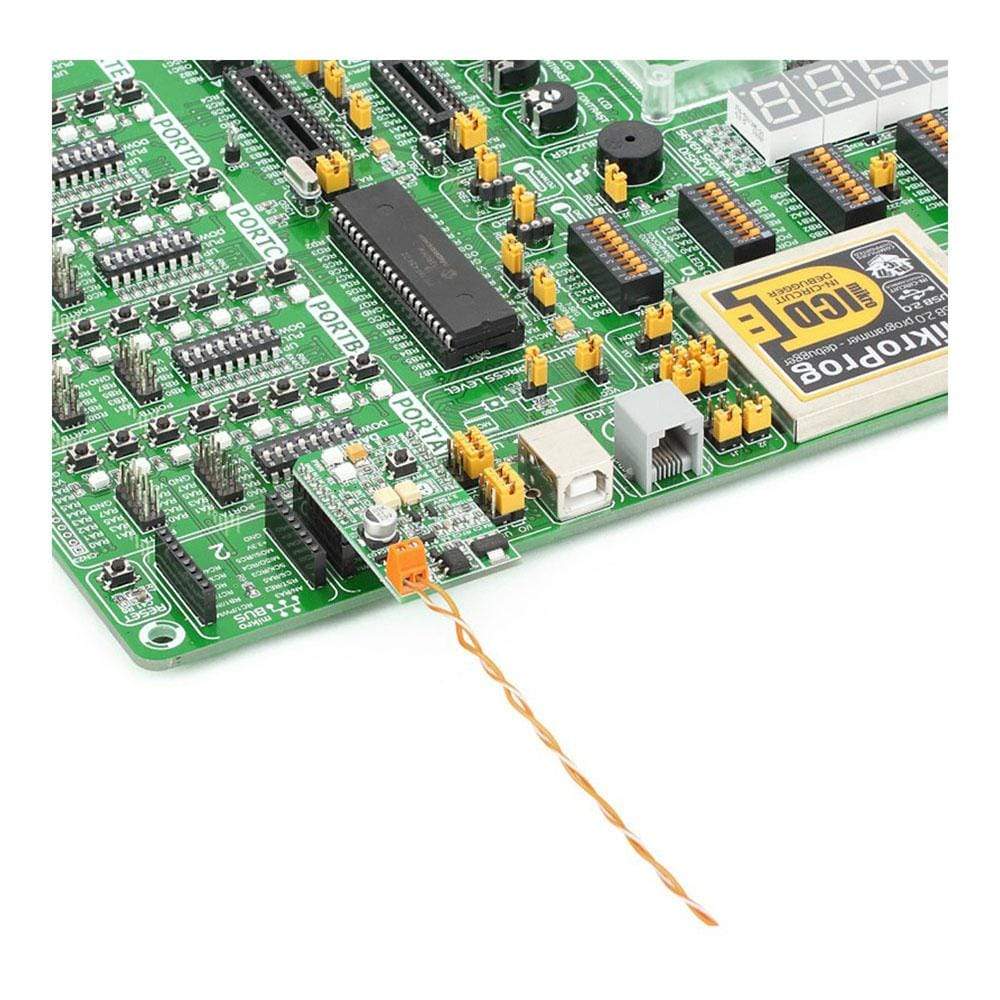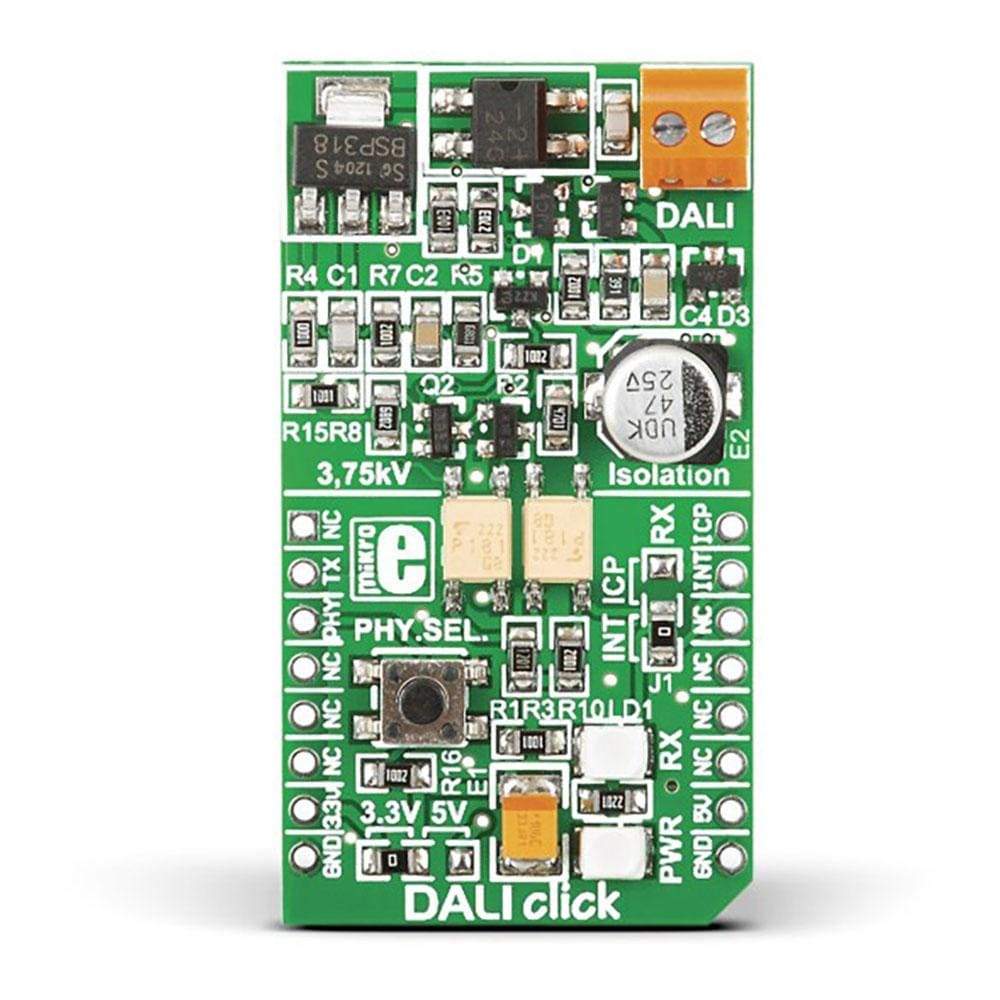
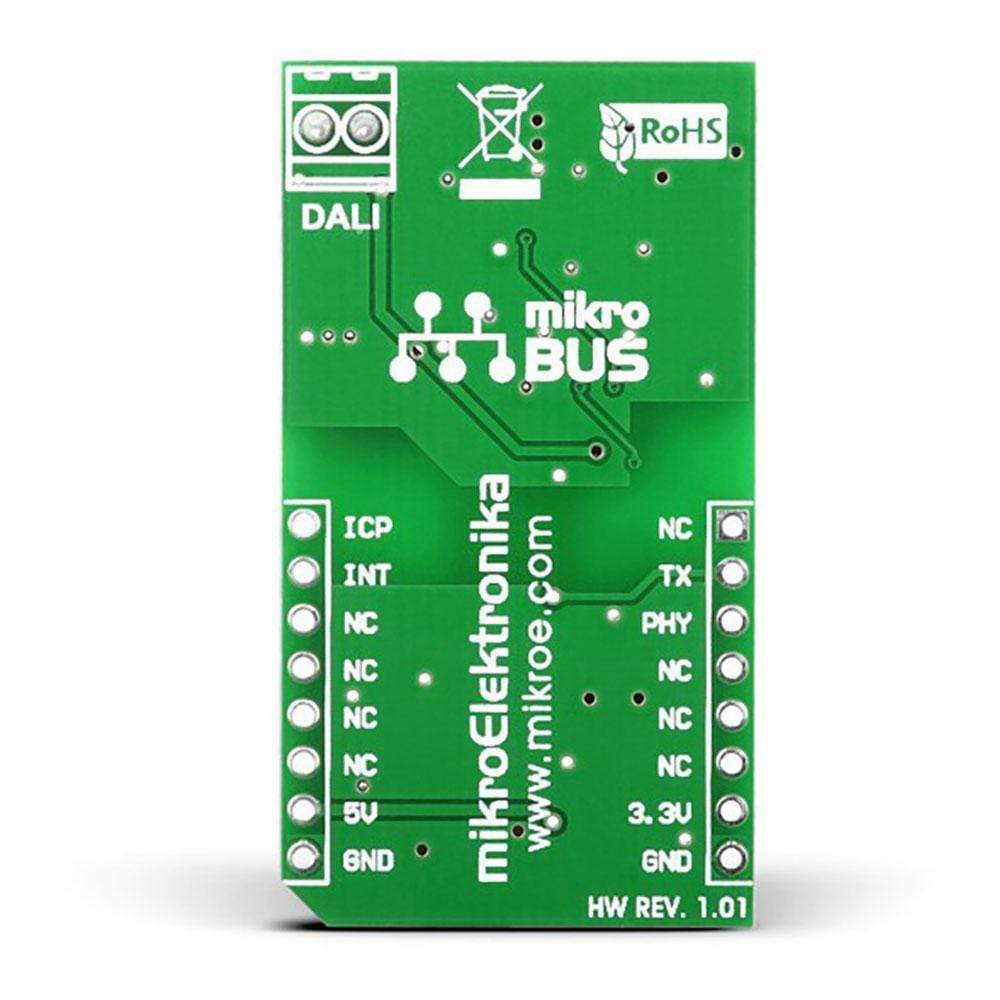
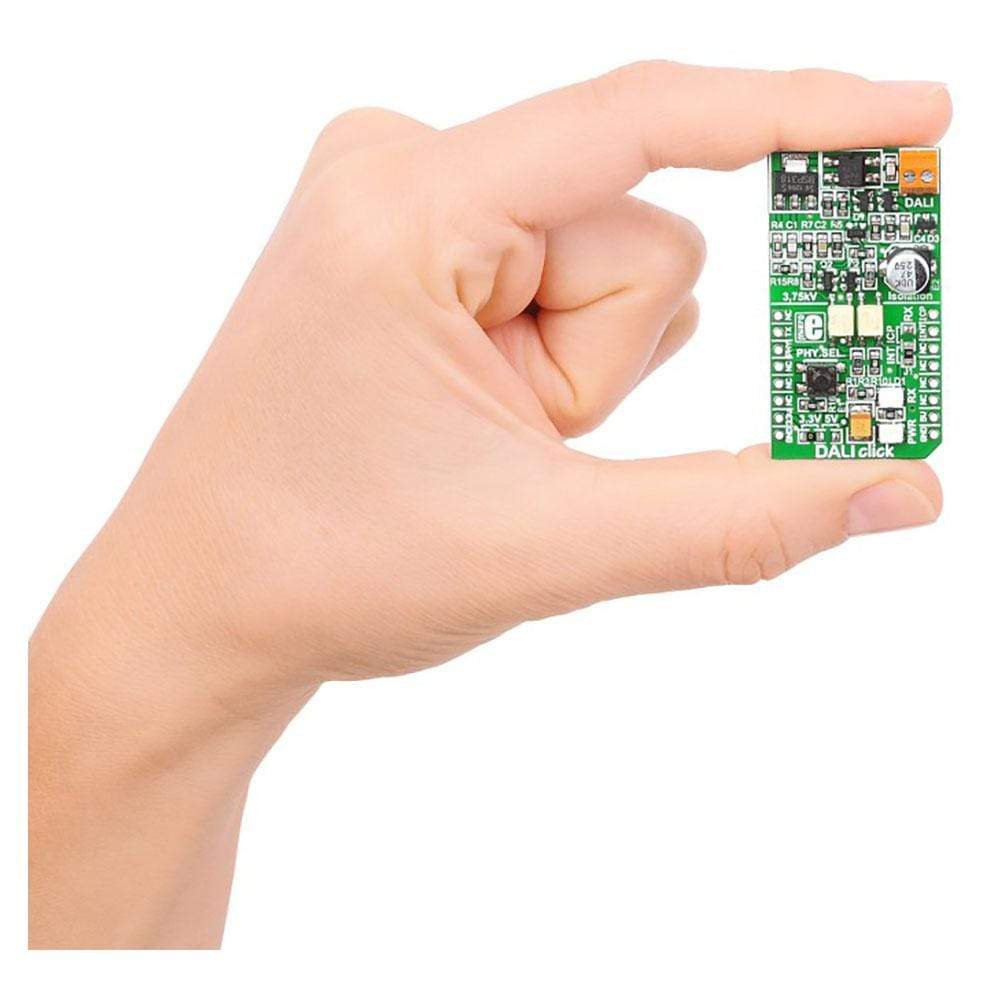

Key Features
Overview
The DALI 2 Click Board™ can be used to develop applications for controlling other slave nodes of the DALI network or to develop slave node applications that would respond to the commands sent by the master control unit.
The simplest DALI network consists of a controller and one or more slave devices, such as LED drivers, dimmers, and ballasts, equipped with DALI interfaces.
The DALI 2 Click Board™ offers a simple and reliable interface to DALI and DALI 2 communication buses, making it possible to dive into the world of intelligent lighting.
Downloads
Mit dem DALI 2 Click Board™ können Anwendungen zur Steuerung anderer Slave-Knoten des DALI-Netzwerks entwickelt oder Slave-Knoten-Anwendungen entwickelt werden, die auf die von der Master-Steuereinheit gesendeten Befehle reagieren.
Das einfachste DALI-Netzwerk besteht aus einem Controller und einem oder mehreren Slave-Geräten, wie etwa LED-Treibern, Dimmern und Vorschaltgeräten, die mit DALI-Schnittstellen ausgestattet sind.
Das DALI 2 Click Board™ bietet eine einfache und zuverlässige Schnittstelle zu DALI- und DALI 2-Kommunikationsbussen und ermöglicht so den Einstieg in die Welt der intelligenten Beleuchtung.
| General Information | |
|---|---|
Part Number (SKU) |
MIKROE-2672
|
Manufacturer |
|
| Physical and Mechanical | |
Weight |
0.021 kg
|
| Other | |
Country of Origin |
|
HS Code Customs Tariff code
|
|
EAN |
8606018712472
|
Warranty |
|
Frequently Asked Questions
Have a Question?
Be the first to ask a question about this.

